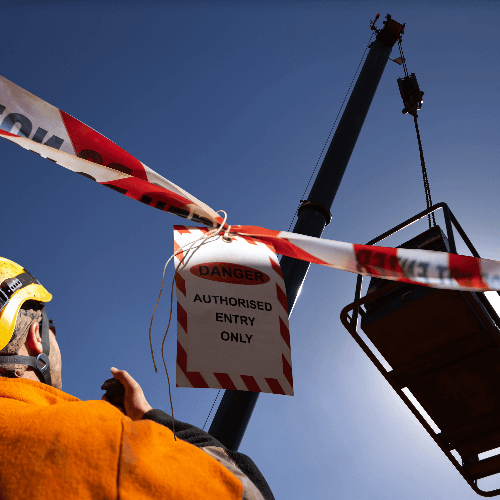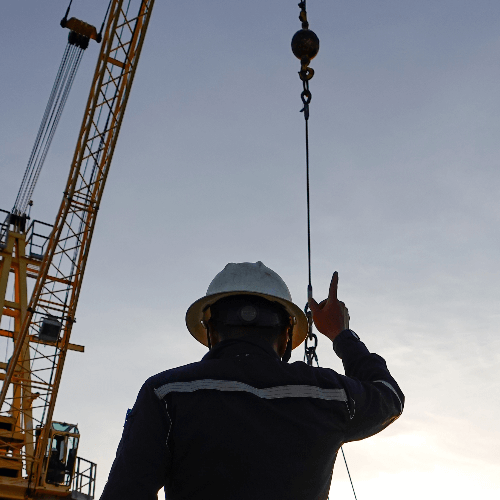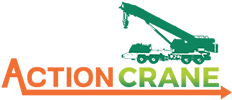Essential Practices When Working Around Mobile Cranes
Construction sites are bustling with activity, and one integral part of the process is the use of mobile cranes. These towering machines are essential for lifting and transporting heavy loads, making them indispensable on Kelowna job sites. However, working around cranes poses significant risks that demand careful attention and adherence to safety protocols.
Contact Us at Action Crane
Be Aware of Safety Zones
Mobile cranes often come with designated safety zones marked by barriers or signs. The crane operations team has established these areas to keep people and equipment at a safe distance from the crane’s operation. One should never ignore or cross into these safety zones, as doing so significantly increases the risk of accidents and injuries. Maintaining a respectful distance ensures that workers are out of harm’s way in the event of unexpected crane movements or equipment malfunctions. Additionally, staying clear of a safety zone around a mobile crane prevents unnecessary concern or distraction for the crane operator when a lift is being carried out.


Proper Communication
Clear and effective communication is paramount when working with cranes. Neglecting proper communication channels can result in confusion, misinterpretation of signals, and ultimately cause accidents. All personnel involved in crane operations should be trained in standardized hand signals, and communication devices such as radios should be used to maintain clear lines of communication between the crane operator, signal person, and other workers on the site.
There are select personnel who can communicate with a crane operator during a lift; workers that are not involved in the lift need to be aware of these guidelines.
1. Signal Person:
- Responsibility: The primary communicator with the crane operator is the designated signal person. This individual is responsible for providing clear and accurate signals to guide the crane operator during lifting operations.
- Qualifications: The signal person should be trained and qualified in crane signaling. They need to understand the standardized hand signals as per industry standards and have knowledge of crane operations and limitations.
- Communication: The signal person communicates directly with the crane operator using hand signals, radio communication, or a combination of both.
2. Crane Operator:
- Responsibility: The crane operator is responsible for executing lifts according to the signals received from the signal person.
- Qualifications: Crane operators must be trained, certified, and experienced in operating the specific type of crane being used.
- Communication: Crane operators need to maintain clear communication with the signal person to ensure the safe and precise execution of lifts.
3. Workers Involved in the Lift:
- Responsibility: Workers directly involved in the lift, such as those attaching loads to the crane hook or securing loads, should follow the instructions provided by the signal person.
- Qualifications: While not everyone needs formal qualifications for crane signaling, it’s essential that workers involved in the lift understand and follow the signals provided by the designated signal person.
- Communication: Workers involved in the lift communicate with each other and the signal person to ensure that load attachment and securing procedures are carried out safely and efficiently.
4. Workers Not Involved in the Lift:
- Responsibility: Workers who are not directly involved in the lift should maintain a safe distance from the crane operation and the load being lifted.
- Qualifications: While specific qualifications may not be required, all workers on the site should have a basic understanding of crane operations and the importance of staying clear of the lifting area.
- Communication: Workers not involved in the lift should be aware of the signals being used and any communication related to the lift. They should also stay alert to warnings or alarms given by the signal person or crane operator.
General Guidelines for Workers Not Involved in the Lift:
- Stay Clear: Workers not involved in the lift should stay clear of the crane’s swing radius, load path, and designated safety zones.
- Be Alert: Remain alert to signals and alarms. If there is an emergency or a need to stop work, be prepared to follow site-specific procedures.
- Use Barricades and Signage: Contractors should use barricades, signage, and other safety measures to clearly mark off the crane’s work zone and prevent unauthorized access.
- Report Hazards: If workers observe any unsafe conditions or hazards related to the crane operation, they should promptly report them to the supervisor or safety personnel.
By strictly adhering to these communication protocols and safety guidelines, construction sites can significantly reduce the risk of accidents and create a safer working environment for everyone involved. Clear communication and a culture of safety are fundamental in ensuring successful and incident-free crane operations.
Conclusion
- Being part of a construction site with mobile cranes means that everyone plays a role in maintaining a safe workplace. While you may not be directly involved in crane setup and operation, your awareness and adherence to safety guidelines are integral. By respecting safety zones, staying vigilant about ground conditions, and being aware of communication and load capacity practices, you contribute to building a safer workplace for yourself and your colleagues. Remember, a culture of safety is a collective effort, and your commitment to these principles ensures that everyone goes home safely at the end of the day.


